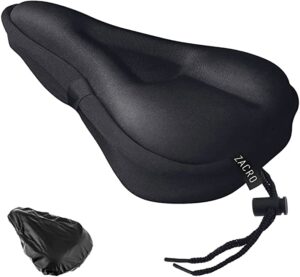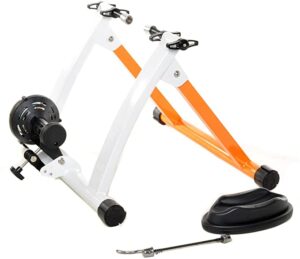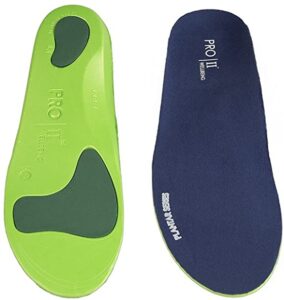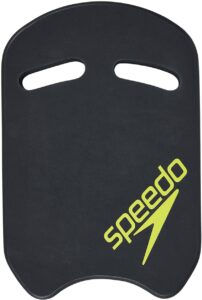Weight in pregnancy is a tricky subject. There are lots of benefits to maintaining a healthy BMI during pregnancy but it is often easier said than done. A lot of mums-to-be (and new mums) are nervous about exercise and diets in case it affects their baby or their own health negatively.
Here is what the evidence says about the management options:
Information – Studies have looked at how to approach weight management during and after pregnancy. One study used interviews to find out how weight management was perceived amongst pregnant women and midwives. The findings suggest that women with high BMI would benefit from additional information and support about weight management prior to conception, during pregnancy, and postnatally. Please speak to your midwife about what resources are available to you, as one trust will likely be different to the next. Obesity in pregnancy is common and doesn’t have to be a cause for concern, as long as the correct precautions are followed and the right guidance is provided.
Diet – According to this report, reducing BMI during pregnancy means lower rates of maternal hypertension, macrosomia, caesarean section delivery and new-born respiratory distress syndrome. However, this is often easier said than done for the mother and can create a lot of unwanted additional stress. An early antenatal visit allows timely referral to a multidisciplinary team, including a dietician. A dietician can discuss weight targets and provide information on:
- Healthy eating recommendations (variety, portion size, sugar intake).
- Increasing activity safely.
- Tracking weight to identify trends.
Food supplements – One area of the food supplement industry that has been researched a lot (in more recent years) is that of the probiotics. Some bacteria have been shown to aid weight loss and promote a healthier gut environment. You can read about probiotics in more details HERE.

Safe exercise during pregnancy with a high BMI – Lots of ladies with a higher BMI or obesity participate in exercise of some form. Some ladies start to exercise because they learn they are pregnant and want to improve their health during this period, either way, there are lots of options available. Have a read of this article from Healthline, which gives some good tips on how to ease into exercise if you are overweight.
Now lets look at some evidence based options:
- Aquatic exercise – Studies have consistently demonstrated positive impact of involvement in aquatic exercise programs on controlling excessive maternal weight among samples of pregnant women. This study found that ladies who participated in swimming during their pregnancy were significantly more likely to have intact perinea after childbirth. Another study found that women who perform moderate physical exercise in an aquatic environment are at lower risk of Postpartum Depression, and this study found that swimming during pregnancy alleviates pregnancy-associated decrease in memory! Swimming has also been found to help with pelvic girdle pain, lower back pain and prevention of antenatal weight gain. Then there are all the other health benefits associated with swimming, improving maternal body image, reduction of stress on the joints, increasing physical strength, improving cardiovascular health and general fitness.

If you’re not a strong swimmer then try a kickboard. A kickboard is a float that you hold and it allows you to just use your legs for swimming. Sounds lazy? It’s not, it’s actually really hard work and gets the heart pumping. It’s also a great way of swimming without having to put your head in the water (if that’s your way of swimming or you don’t feel like washing your hair that day). Using a kickboard can allow you to do a narrower leg kick or just front-crawl leg kick (which can help if you have pelvic girdle pain).
Or, try an aqua class. They don’t involve swimming as such and you can usually find antenatal aquatic classes at your local baths. These classes will still get the blood pumping and work up a sweat but at much less impact than other land-based classes. This will help if you have (or are at risk of) prolapse, if you have PGP or lower back pain and / or hip pains.
- Cycling – Cycling doesn’t have to involve getting on a push-bike and riding round the streets for hours! You could try a spin class for example. Spinning is a really popular form of exercise and you get lots of different fitness levels and abilities in these classes. You can hide at the back or sit happily at the front. You can put as much or as little effort in as you please because its up to you how much resistance you add to your bike. If you find the seat uncomfortable you can fold up your jumper and sit on that or you can buy a gel cover (like this one) that you pop on at the start of the class.

If you don’t fancy the thought of heading to the gym each week (or a few times a week) then it is definitely worth investing in a Turbo Trainer. A Turbo Trainer allows you to connect your own bike (or someone else’s) at home so that you can pedal at speed, change the resistance and watch TV, all at the same time. You can set it up in any room in the house (as long as there is space to walk around it for a few months), you can add your gel seat cover to your bike seat for comfort (or stick a cushion on there) and jump on any time you have spare energy. Turbo trainers come in lots of shapes and sizes. This one is popular due to it being quieter than some of the cheaper ones but if noise isn’t an issue then you could look at a less pricey option like this one.

I guess we should also mention Peloton Bikes, whilst we’re talking about safe biking options. Peloton Bikes are effectively Spin Bikes (but Spin is trademarked). They are stationary, at home bikes, with large touch screens. With Peloton you pay a monthly membership and get access to thousands of classes online (like having an instructor live in your house). Using a programme like this can help to keep you motivated and push you a little harder than you might push yourself (like you would in a class but you don’t have to leave your home). They are a great piece of fitness equipment and a great investment for when baby arrives (bike when the baby sleeps)?! But they come with a hefty price tag. Have a look at their website here.
- Yoga – THIS is a great study that looked into the effects of yoga on obesity. They reported that continuous yoga practice may be used as an alternative therapy for obesity prevention and health promotion. Also, this more recent study found that the subjects who followed regular antenatal exercises, including yoga, had significantly lower rates of caesarean section, lower weight gain, higher new-born infant weight, lower pain and overall discomfort during labour, lower back pain throughout pregnancy, and earlier post-partum recovery compared to those who did no specific exercises or only walked during pregnancy.
There are lots of Online Yoga programmes available, have a look at our Top 5 here (and why we love them)! You can also read our blog on how yoga can help in other ways.

- Pilates – THIS study found that Pilates dramatically reduces body weight, BMI, and body fat percentage in adults who are overweight or diagnosed with obesity.
Have a look at our Top 5 online Pre and postnatal Pilates programmes here.
- Walking – THIS study supports walking as an exercise to help with obesity.The first mistake that people make when increasing the amount of walking they do is wearing the wrong footwear! I cannot emphasise enough how important good shoes are! Supportive and cushioned trainers have been linked to a reduction in plantar-fasciitis, lower back pain and pelvic related pains. If you’re not in the position to buy new trainers (good ones come with a rather hefty price tag) then the other option is, good quality insoles (like this). Insoles can sometimes take a bit of getting used to, but evidence has shown that they can help to reduce symptoms associated with things like pelvic and lower back pain.

There are also different ways to add more walking to your daily / weekly routine to make it a little more interesting. One option is Nordic Walking. This is effectively power walking using ski poles. It is a popular and fast-growing type of exercise in Northern Europe that has been shown to exert beneficial effects on resting heart rate, blood pressure, exercise capacity, maximal oxygen consumption and quality of life. Studies have looked into the effects of Nordic walking on lower back pain and the results have been good. In fact, this study from 2019 found that Nordic Walking provided greater and faster benefits than standard walking and was found to be an extremely useful tool in weight loss and symptoms associated with obesity. There are lots of videos online, like this one, that teach you the basic Nordic Walking techniques (or have a look for a local club). You can buy your poles online here.
Safety – In the absence of obstetric or medical complications or contraindications, physical activity in pregnancy is safe and desirable. Pregnant women should be encouraged to continue or to initiate safe physical activities where possible. THIS study looked at the safety of exercise during pregnancy and concluded that: Even pregnant women who have not been exercising regularly can gradually increase their exercise during pregnancy. Regular exercise during pregnancy promotes overall wellness and helps maintain appropriate gestational weight gain and appropriate foetal weight gain.
What symptoms to watch out for:
Extra weight or high BMI can be associated with gestational diabetes and Preeclampsia.
Gestational diabetes does not usually cause any symptoms and should be picked up during your normal screening sessions when your blood sugars are tested. Some women may develop symptoms if their blood sugar levels gets too high (hyperglycaemia), such as:
-
increased thirst
-
going to the toilet more often (to urinate)
-
a dry mouth
-
tiredness
But some of these symptoms are common during pregnancy and are not necessarily a sign of gestational diabetes. Speak to your midwife or doctor if you’re worried about any symptoms you’re experiencing.
Preeclampsia should also be picked up at your prenatal appointments. It shows up as high blood pressure and protein in urine samples.
As pre-eclampsia progresses, it may cause:
-
severe headaches
-
vision problems, such as blurring or seeing flashing lights
-
pain just below the ribs
-
vomiting
-
sudden swelling of the feet, ankles, face and hands


